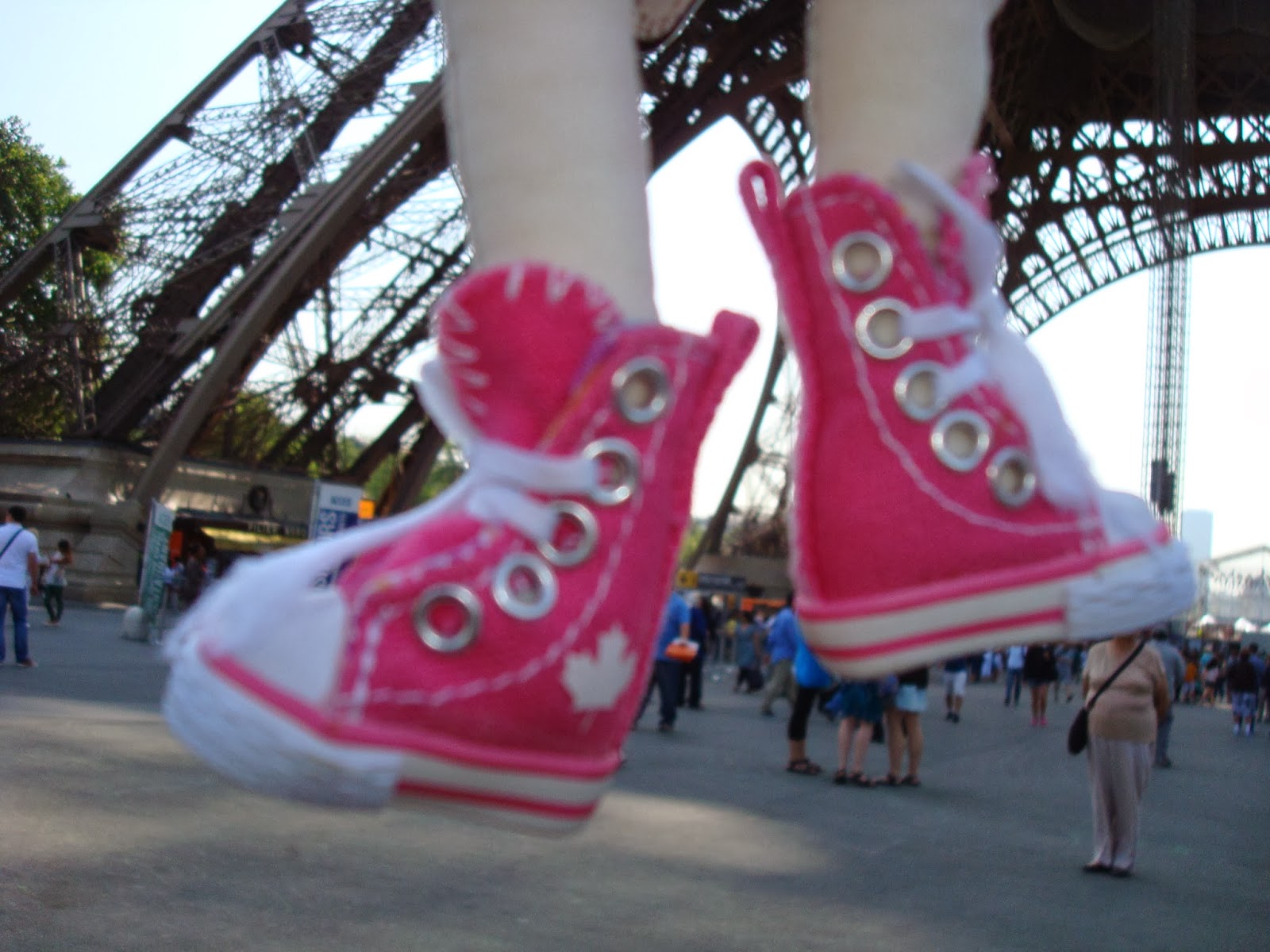,
No matter how
many times my pink-sneaker clad feet have traipsed along Parisian rues and
avenues, they return time and time again to familiar stomping grounds and queue
with the rest of them to gawk at one of the world’s most photographed landmarks,
the Eiffel Tower.
Constructed in 1889
for the International Exhibition of Paris or Exposition Universelle
commemorating the 100th anniversary of the French Revolution, the
300 meter tall structure was originally purposed to be the main entrance
archway, a wrought iron monstrosity situated on the Champs de Mars. Chosen from more than 700 prospective
designs, Gustav Eiffel’s winning bid was petitioned against by 300 plus artisans
and architects, all of whom canvassed concerns that the proposed design would
be an eyesore on the landscape, a revoltingly ugly tower dominating over Paris “like a gigantic black smokestack”. The litany of complaints, led by Charles
Garnier, who was the architect of the old opera building, read as such: “a gigantic factory chimney whose form
will disfigure the architectural harmony of the city” and “we, writers, painters, sculptors,
architects and passionate devotees of the hitherto untouched beauty of Paris,
protest with all our strength, with all our indignation in the name of slighted French taste, against the erection
– of this useless and monstrous Eiffel Tower”.
Despite the
uproar, construction forged on and the Tower was completed within a 2 year
period, the 7,000 steel ton structure an instantaneous sensation with locals
and foreigners alike. Slated to be
dismantled upon expiration of Gustav’s 20 year land lease to the city of Paris,
the Tower was granted a second lease on
life, as the onset of World War 1 elevated its status from questionable
curiosity to a bona fide necessity, as its radio tower technology intercepted
enemy communications and aided in the capture of renowned spy Mata Hari.
From a
meeting place of scientific minds conducting out of this world experiments such
as measuring the speed of wind as well as dabbling in radio transmission
technology, the Eiffel Tower secured its position as a now prominent landmark
dominating the French landscape.
Fast forward
a couple of decades and the rest, of course, is history. The Eiffel Tower is beloved the world over,
symbolizing the heart of Paris, its allure drawing millions of visitors a year,
250 million at last count.
Pink Sneaker Interesting
Tidbits and Fascinating Facts:
·
Did you know that the cost of construction was 7,800,800 gold
francs?
·
The Eiffel Tower is re-painted every 7 years in order to protect
it from rust.
·
More than 50 tons of paint is used in re-painting the tower.
·
The wrought iron structure sways up to 12 cm. on windy days.
·
The tower has been quite the alluring object for daredevils to
conquer, as it was scaled by a mountaineer in 1954, was parachuted off by two
Englishmen in 1984 and in 1987 a bungee jumper was arrested after completing
his one and only jump.
Come hang out with
globe-trotters and locals alike in appreciative wonder of Monsieur Eiffel’s
lattice wrought iron structure, a tower like no other...






















0 Response to "Monsieur Eiffel's elaborate wrought iron structure "
Post a Comment